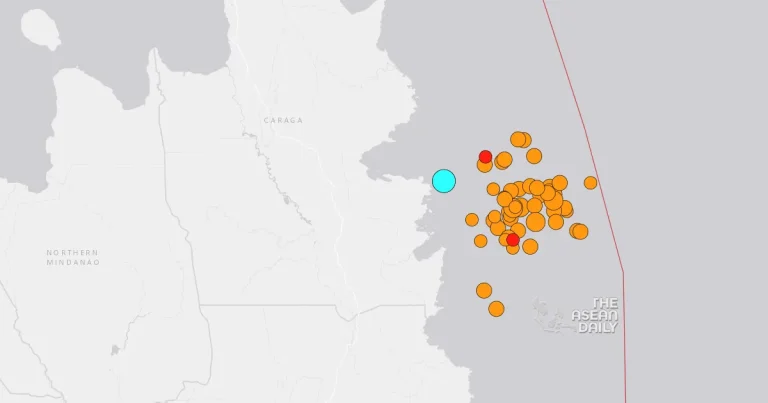3-12-2023 (MANILA) A powerful 7.6 magnitude earthquake struck Mindanao Island on Saturday evening, followed by four aftershocks. Initially, both the Philippines and the United States issued tsunami alerts, causing residents to evacuate coastal areas due to fears of a tsunami. However, approximately three hours later, the tsunami alert was lifted.
According to the Philippine Institute of Volcanology and Seismology, a 6.9 magnitude earthquake occurred in Surigao del Sur province in southern Philippines on Saturday, December 2, at 10:37 pm local time.
The European-Mediterranean Seismological Centre recorded the earthquake as a 7.5 magnitude with a depth of 63 kilometers, while the United States Geological Survey (USGS) detected it as a 7.6 magnitude earthquake with a depth of 32 kilometers.
The USGS reported that the region experienced a total of four strong aftershocks following the earthquake, measuring 6.4, 6.2, 6.1, and 6.0 magnitudes respectively. The institute also issued a tsunami alert, predicting that the first wave would reach the Philippines before midnight local time, with a wave height exceeding one meter and the possibility of lasting for several hours. The statement further warned, “The tsunami is expected to be destructive and could pose a threat to lives.” Authorities urged residents in Surigao del Sur province and coastal areas of Davao Oriental province to evacuate immediately to higher ground or move inland. “Vessels already at sea should remain in deep waters near the coast, awaiting further instructions.”
Following the earthquake, the Japan Meteorological Agency also issued tsunami advisories for multiple Pacific coastal areas, including Miyako Island, stating that the tsunami was expected to arrive as early as 1:30 am local time on Sunday, with a wave height of one meter or more.
However, Reuters reported at 1:22 am on Sunday that the US Geological Survey stated, “Based on all available data…the tsunami threat caused by the earthquake has passed.”
They also mentioned, “There may be slight sea-level fluctuations in some coastal areas.”




